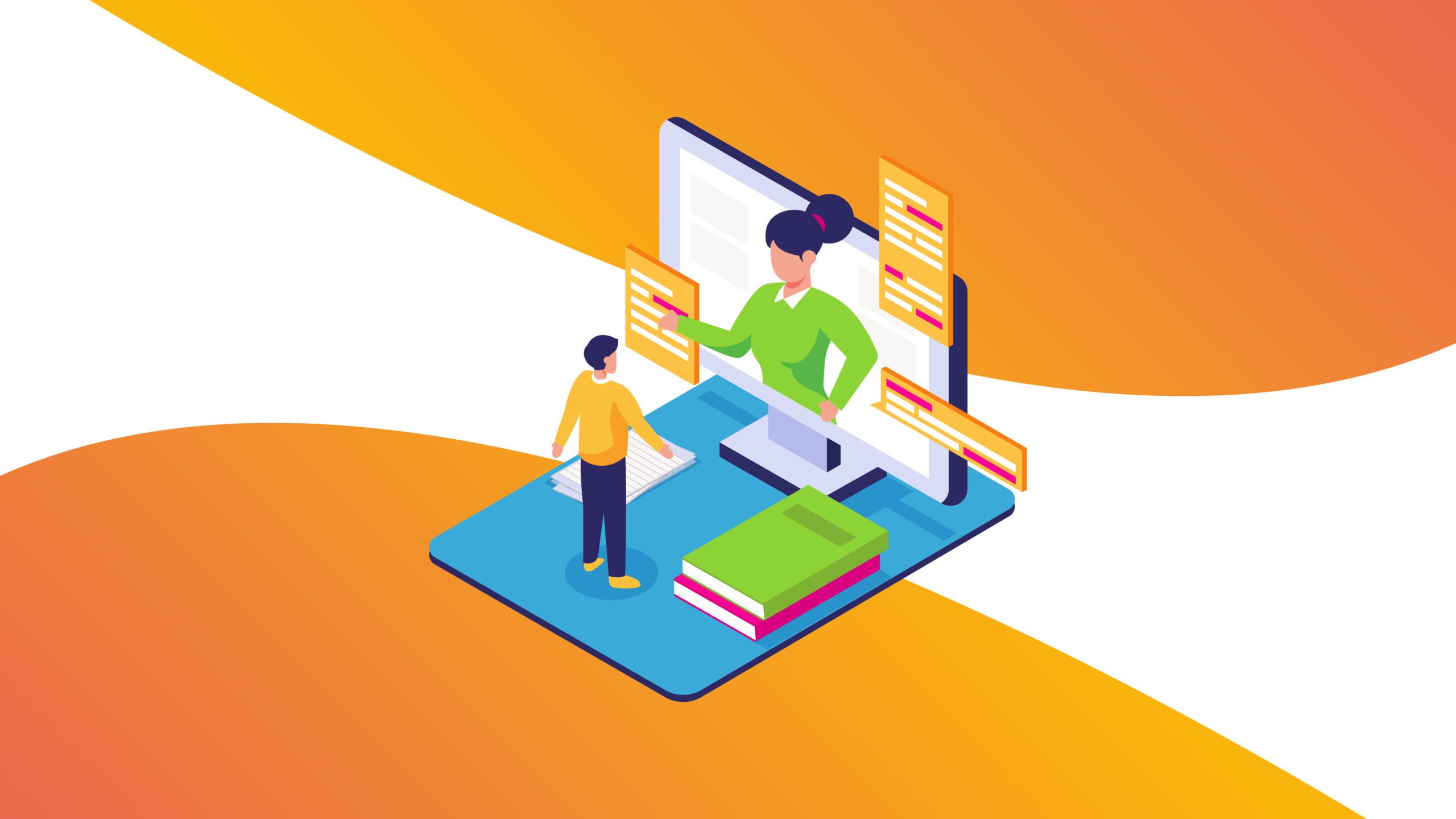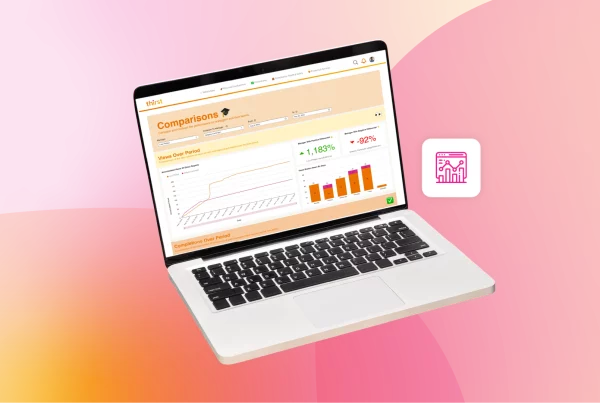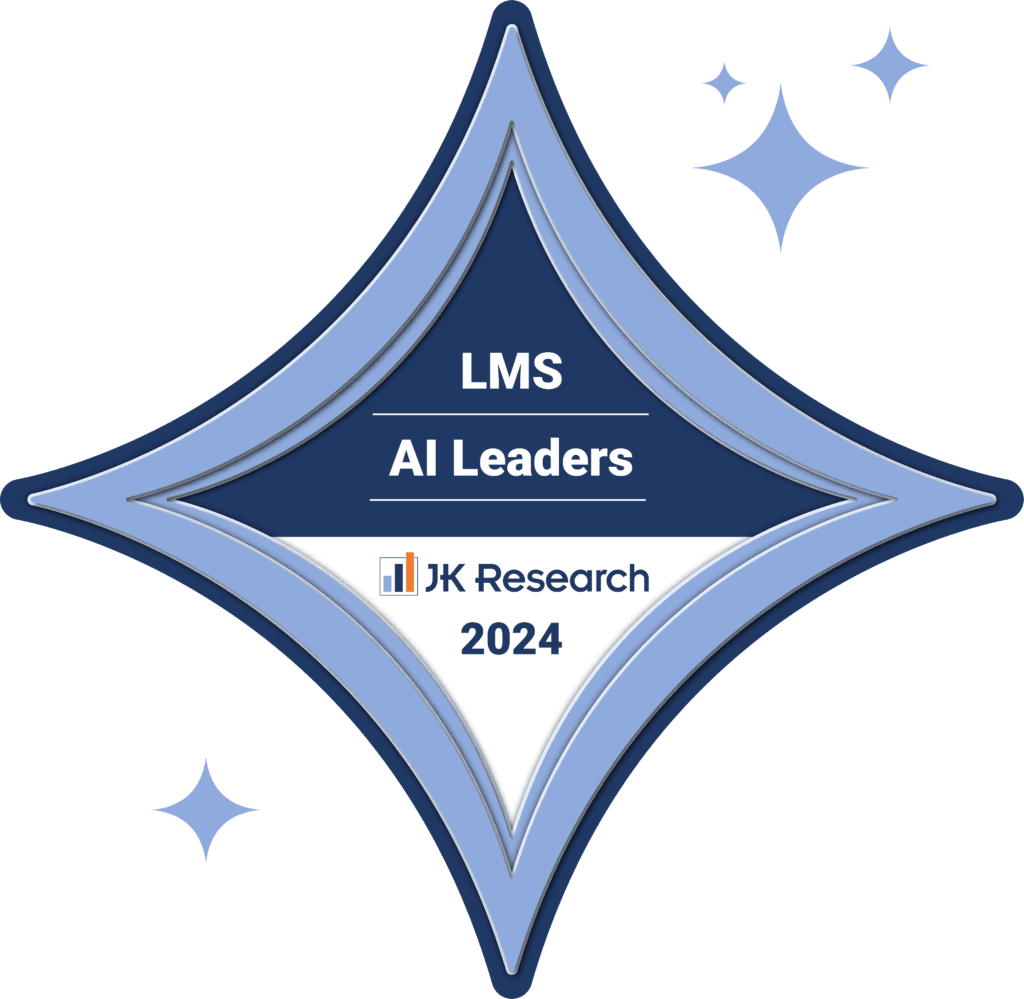Learning and development has come on leaps and bounds in the last few decades.
The days of businesses hiring a venue, wrangling colleagues for a morning, afternoon or full eight hours as you announce the launch of a new product or service or get everyone together to help build stronger relationships have gone the way of the dodo.
Whether it’s down to our blossoming digital infrastructure 🖥️, adaptation to a post-Covid world or the benefits of utilising digital and in-person learning, L&D has evolved significantly from just twenty years ago.
This shouldn’t come as a surprise. Nothing stands still. Everything evolves.
The question is not why the change, but how do we adapt? This is true of every sector. L&D is no different. You only need to look at blended learning to see this.
But here’s the question, 👉 what is blended learning?
Let’s have a look and find out. ⚡
Blended Learning: A Brief Definition
Blended learning embraces online eLearning and traditional learning. It’s the best of both worlds. 😊 Instructors partner an in-person classroom experience with the broad resources online to create an engaging and comprehensive, multimedia learning experience.
In practice, this means that learners leverage digital resources like task manager, file-sharing, video conferencing apps and online communities to access, learn and submit work to pass a course.
Learners 👨🎓 also benefit from one-to-one and classroom-based tuition from qualified instructors. There are no outdated textbooks. No emphasis on one style of learning alone. Learners can even access a personalised Learning Management System (LMS), complete with tutorials, quizzes, and even games and videos, tailored to them.
In simple terms, blended learning offers the best of both worlds. 🔥
The Types of Blended Learning Models
Personalised learning experiences improve the student–teacher relationship. People can learn at their own pace and pursue what style of learning most appeals to them. These factors contribute to a noteworthy performance improvement. 🤔
There are six types of blended learning models. They’re not all the same. Some are similar. Others are completely different. But each has its benefits.
Let’s examine each blended learning model.
The Face-to-Face Driver Model
This model reflects a traditional classroom experience. People participate in a live webinar via video conferencing software like Zoom or Teams. The teacher instructs students in real-time and hands out assignments to be completed before the start of the next session.
The Flipped Model
The flipped model is similar to the face-to-face model however students are provided with learning materials and resources distributed before each virtual classroom experience through an LMS. Learners 👨🎓 are responsible for completing their own preparation before each lesson. Interaction between learners is encouraged. Self-motivation is a cornerstone to success.
The Rotation Model
👉 👉 This model sees students divided into smaller groups and rotated between different forms of learning. Instructors decide whether setting assignments, in-person or video instruction through Zoom, participating in webinars or a combination of all these processes is best for educating students.
The Flex Learning Model
This is a tailored learning model that gives students the opportunity to choose the type of learning best suited to their goals and personality. Individual assignments are partnered with group learning. Learners can choose if and when they want to use specific teaching resources.
The Enriched Virtual Model
The enriched learning model encourages students to learn at their own pace and in their own time. Coursework is completed virtually by attending webinars and instructor sessions. Learners manage their own time. Autonomous learning is championed. Being self-motivated key to success.
The Online Driver Model
The last model offers the most student autonomy. Learners 👨🎓 will be able to complete models at their own pace. There is no requirement to invest any time in lessons. Access to instructors is provided. Video calls take a back seat to traditional classroom-based learning. Optimal student autonomy and self-motivation are essential to a student’s success.
Blended Learning vs. Hybrid Learning
They may share a few key elements. They may sound the same, on the surface. Both promote virtual and traditional, in-person learning. Both leverage technological innovation to optimise learning. But how blended and hybrid learning are conducted is wholly different.
Blended learning is a method of teaching that integrates eLearning technologies with traditional, in-person classroom-based learning. The focus is on the learners to customise their own experiences. They should absorb online tutorials, watch videos and complete assessments online, learning at their own pace, on their own time.
Hybrid learning is a method used to supplement or as an alternative to traditional in-person teaching. Classroom-based and remote students will be taught simultaneously. 50% of time will be spent in a classroom and 50% online. 🖥️ This can be an ideal solution for people who have a significant commute to get to the office or childcare needs.
Key Blended Learning Strategies
There’s not one single blended learning strategy. There are a few. When instructors leverage a bunch of these learning strategies, their learners can add a whole host of different skills to their repertoire.
From collaboration to critical analysis, interested in learning the essential key blended learning strategies instructors should be prompting? Keep reading.
Collaborative Learning
Collaborative learning encourages people to work together, share ideas and respond to questions as a group. Everyone learns from one another. Activate collaborative learning and watch diverse ways of thinking grow, in addition to significant upskilling and teamwork and camaraderie blossom.
Visualisation
Some people are visual learners. 🔍 They need that visual representation to understand an idea, a concept, or a problem. Visualisation can be used during and after a question has been asked, when a problem needs to be solved when the context is needed. Incorporate this into your L&D development programme and watch your colleagues grow.
Interpreting the Language
Academic language can be heavy on the jargon. Rich in technical language. Flooded with technical terms. 📚
This can deter students from learning. However, interpret or change the way a question is worded, or a theory explained, and you can save students a whole lot of time Googling definitions or asking an instructor for clarity. This way they focus on what’s important.
Discussions
You can only learn so much on your own. Sometimes bouncing ideas, asking questions, and learning different points of view is a better approach to having a more, well-rounded learning experience. In the classroom and virtually.
The Bottom line… if you want to evolve, most of us can’t do it alone. We need our peers. Our colleagues. Discussions are paramount.
The Benefits of Blended Learning
The independence and potential personalisation of what, when and how someone learns promotes maturity and self-motivation. But this growth merely scratches the surface. There are several key benefits of blended learning, which we’ve outlined below. 😊
Blended Learning Promotes Flexibility
Some of us perform better when left to our own devices. Others need the structure of a classroom, a dedicated time to attend an online webinar to motivate themselves. The advantage of blended learning is that it provides instruction and support to people as and when they need it, in an environment that suits them.
Blended Learning Helps Students Progress at their Own Pace
Some people pick things up quickly. Others need a bit more time to understand a concept. A process. To memorise facts and statistical data. Learn how to communicate with customers on all occasions. To fully grasp how to perform CPR or the Heimlich manoeuvre.
Blended learning allows people who’ve nailed one aspect of the curriculum to move onto the next level whilst giving other students more time to get their heads around what they’re learning.
The benefit of this? Learners won’t feel that they’re being held back or pushed forward too quickly.
Blended Learning Involves Both Online and Classroom-Based Learning
A well-balanced L&D infrastructure means organisations can successfully educate their people online and offline. Better still, with online resources, you have loads of information available at your fingertips.
From 🖥️ videos to eBooks, tutorials to audio content, there’s so much more than a workbook a handful of assignment sheets, group discussions and maybe a short test at the end.
Blended Learning Appeals to All Learning Styles
Some learners are auditory. Others learn by reading books, 📚 articles and writing notes. Repeating core concepts, definitions etc. over and over again until they’re memorised. Blended learning caters to every type of learner. There are also overlaps between virtual and in-person lesson structure – something that benefits every type of learner.
Blending Learning Promotes Personal Learning Experiences
Tailored learning programmes are more successful than generic lesson plans. Learners prosper when they have personal learning experiences. This could take the form of more independent learning, and more focus on a one-to-one, in-person sessions.
Perhaps take a more visual 🔍 approach to lessons, either whiteboards or PowerPoint presentations? Focus on teamwork and independent study. On diverse instruction. The key is to make sure all learning styles are represented.
Accelerate Blended Learning with Thirst
Blending learning allows learners to excel. To be the best they can be.
Achieve results reflective of their potential.
It offers the best of both worlds.
Offers people some much-needed learning experience diversity.
Promotes autonomy.
Appeal to different types of learning styles. Different personalities.
Blended learning is a pathway to maximising everyone’s success. Something that Thirst champions.
Book a free demo and try blended learning with Thirst yourself.
For more e-learning insights, resources and information, discover the Thirst blog.
You may also enjoy:
The Ultimate Guide to Faster Employee Onboarding | 7 Ways to Identify Knowledge & Skills Gaps in Your Workforce | Skills vs Competencies: What Are the Key Differences?







